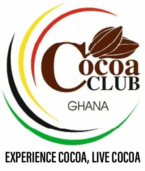Cocoa in Ghana
- Cocoa was introduced into Ghana in 1879 from Fernando Po by Tetteh Quarshie.
- Within three decades of its introduction, cocoa had become the main export commodity of the then Gold Coast.
- By 1936, Ghana was producing about 50% of the world’s output of cocoa beans.
- Ghana remained the world’s leading producer of cocoa until 1977 when overtaken by Brazil.
- Brazil was later overtaken by Cote d’Ivoire in 1979.
- Ghana currently produces about 20% of the world’s output and it is the second leading producer/exporter of cocoa beans after Cote d’Ivoire.
- Giving of special concession to companies interested in local processing of cocoa.
- Constitution of a National Committee for the Promotion of Cocoa Consumption.
- Introduction of an annual Cocoa Festival to create awareness of the various cocoa products available and promote its utilization among Ghanaians. The festival is also aimed at providing a platform to sensitize Ghanaians on the health and nutritional benefits of cocoa and imbibe its consumption in them.
- Introduction of an award scheme for scientists who conduct research on the health benefits of cocoa as well as an award for journalists who write on cocoa consumption.
- Development of promotional brochures, posters and flyers on the health and nutritional benefits of cocoa
- Using other integrated marketing communication tools to promote cocoa consumption.
- Provides the most powerful dietary antioxidants
- Delays physical signs of ageing
- Reduces blood pressure
- Delays physical signs of ageing
- Fights stress
- Fights dental decay
- Provides energy and vitality
- Minimizes discomfort /pain associated with menstrual periods
- Minimizes worrisome changes that accompany menopause
- Boosts sexual desire and performance (aphrodisiac effect)
- Boosts fertility in both sexes
- Inhibits dangerous clot formation within blood vessels
- Affords anti-cancer and cancer-prevention properties
- Promotes cleansing and detoxification of the body
- Rich in dietary iron which helps to fight anemia
- Improves memory and general brain functions
- Promotes nourishment/health of brain cells
- Supplies many essential dietary minerals
- Offers healthy levels of dietary fiber
- Protects blood vessels
- Boosts sense of well being
- The cocoa industry has been the mainstay of Ghana’s economy for a century, contributing 6 to 7% of GDP.
- Cocoa employs, directly and indirectly, over 2 million people (about 7% of Ghana’s population).
- Cocoa generates about 25% of merchandise exports revenue.
- Cocoa contributes significantly to socioeconomic development by providing infrastructure in the form of roads, education and health facilities.
- Favour
- Purity or Wholesomeness
- Consistency/Uniformity
- Potential
- well fermented and thoroughly dry
- free from smoky beans and abnormal or foreign odors
- Free from evidence of adulteration
- reasonably free from living insects
- uniform in size
- free from broken beans, fragments, pieces of shell, and be virtually free from foreign matter.
- Land which is usually estimated as rent per annum.
- Land preparation which involves clearing, stumping, ploughing etc.
- Planting which may include planting materials, nursery development, cost of planting itself and transportation.
- Weeding which is either manual or chemical.
- Fertilizer application which also includes cost, transport and application cost.
- Application of insecticides/fungicides which may include cost of chemical, cost of spraying (may include hiring of sprayer).
- Harvesting which involves plucking, gathering of pods, breaking of pods, fermentation etc.
- Transportation of produce to the point of sale.
- Chocolate
- Cocoa butter
- Cocoa powder
- Animal feed production from cocoa pod husk
- Potash production for soap from cocoa pod husk
- Cocoa Wine, alcoholic beverages such as the local gin (akpeteshie), gin and brandy from cocoa sweatings
- Jams and marmalades from cocoa sweatings
- Pectin for pharmaceuticals, cosmetic and food industries.
